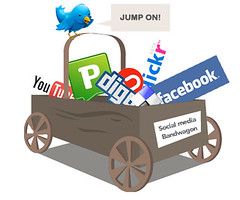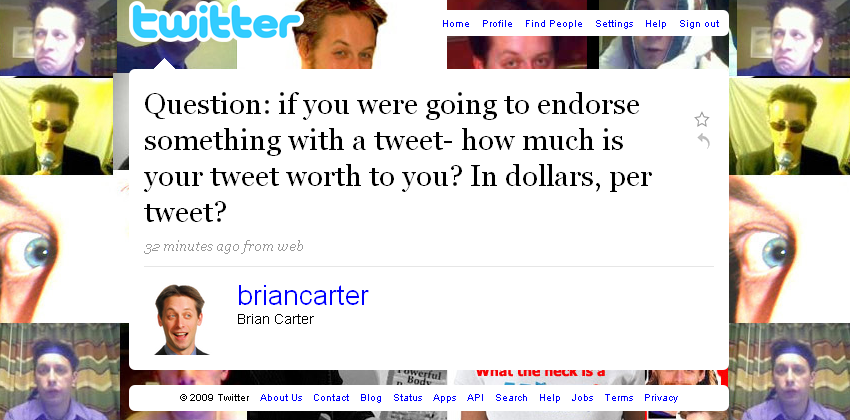
- Image via Wikipedia
We’re all part of a team. Our communities are our fellow players and our thought-leaders are our coaches and managers. Our blog readers and our followers on Twitter are our supporters (and we’re theirs). The mediums we use are our playing fields.
There are eleven players in a soccer team with (usually) four different tasks. Who would they be in a social media soccer team?
- Goalkeeper. The guy that can decide whether your team wins, draws or loses. The wall to keeping your opponents from scoring, who’ll have your team’s back at all times. Solid and reliable. Suggested goalkeepers: Darin Berntson, Roger Byrne, Lizz Harmon and Iggy Pintado.
- Defender. Normally most soccer teams play with four defenders, although three and five can be used too. They’re the guys that will protect the goalkeeper at all costs, while setting up plays from the back to move the game forward. They’re the stalwarts of any great team. Suggested defenders: Justin Levy, Beth Harte, Susan Murphy, Kathryn Jennex, Cheryl Gain, Jacob Morgan and Keren Dagan.
- Midfielder. The engine of any soccer team, the midfielders have a lot of ground to cover. They’re responsible for defending the team as well as leading by example and encouraging the attack. Suggested midfielders: Chris Brogan, Jason Falls, Mack Collier, David Alston, Jason Tryfon and Ari Herzog.
- Strikers. The glamour players of any soccer team. These are the guys that can lead your team to glory and they can do so by scoring either a spectacular goal or a simple tap-in. They can be quiet during a game but they always have the explosive moment in them that changes the game. Suggested strikers: Amber Naslund, Shannon Paul, David Mullen, Scott Stratten and Dave Fleet.
These are my first-team players. Who would be in your soccer team?
If you enjoyed this post, please consider leaving a comment and subscribe to my RSS feed or via email to ensure you can enjoy the latest post(s).

![Reblog this post [with Zemanta]](http://img.zemanta.com/reblog_e.png?x-id=0e317cc6-c399-4e8b-ac43-0e32a395f304)

![Reblog this post [with Zemanta]](http://img.zemanta.com/reblog_e.png?x-id=fca8e36f-ed9d-45f8-b96a-8617a65b20aa)

![Reblog this post [with Zemanta]](http://img.zemanta.com/reblog_e.png?x-id=53a56fac-b457-4ff5-9e61-69a4fb74bc2d)

![Reblog this post [with Zemanta]](http://img.zemanta.com/reblog_e.png?x-id=f1690d34-c4d6-49fb-84d1-0b8ea979467d)

